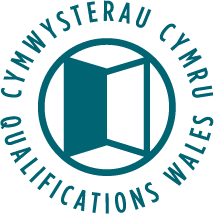Calculation: Whole Numbers
- Unit ID:
- BZS151
- Unit Code:
- HD41CY014
- Level:
- One
- Credit Value:
- 3
- Sector:
- 14.1
- LDCS:
- HD4
- GLH:
- 27
- Last registration date:
- 31/08/2029

This unit forms part of one or more qualifications.
Agored Cymru Level 2 Certificate in Skills for Further Study
Agored Cymru Level 2 Award in Skills for Further Study
Agored Cymru Level 2 Extended Certificate in Skills for Further Study
Agored Cymru Level 1 Award in Skills for Further Study
Agored Cymru Level 1 Certificate in Skills for Further Study
Agored Cymru Level 1 Diploma in Skills for Further Study
Purpose and Aim
To introduce the learner to calculations involving whole numbers
Learning OutcomesThe learner will
|
Assessment CriteriaThe learner can
|
||||||||||||||||
|---|---|---|---|---|---|---|---|---|---|---|---|---|---|---|---|---|---|
|
|
||||||||||||||||
|
|
||||||||||||||||
|
|
||||||||||||||||
|
|
Assessment Methods:
Assessment Information:
1.1 Including large numbers up to 7 digits.
1.2 Including large numbers up to 7 digits.
1.3 Including numbers up to and including 4 digits by numbers up to and including two digits.
1.4 Including numbers up to and including 4 digits by numbers up to and including two digits.
1.5 Including numbers up to and including 4 digits by numbers up to and including two digits.
1.6 Including numbers up to and including 7 digits by numbers up to and including two digits.
2.1 E.g. inverse method.
2.2 By rounding numbers to nearest 10, 100 or 1000.
4.5 E.g. 6 x 7 = 2 x 3 x 7 = 2 x 21 =42; 8 x 9 = 8 x 10 - 8 =72.
If not specifically stated in the assessment information, a plural statement in any assessment criterion means a minimum of two.
Assessor Requirements:
There is no information regarding specific assessor requirements for this unit. Centres should select assessors who are trained in assessment, and who have subject specific competence to assess at this level.